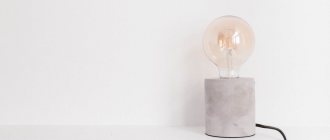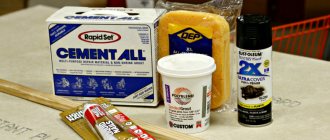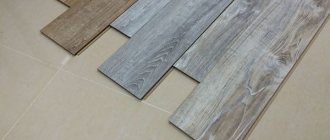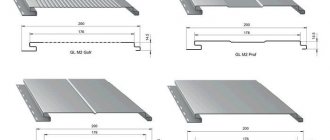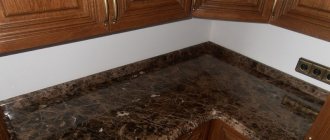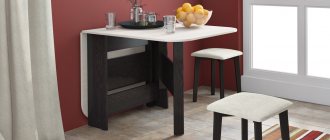Types of eyeliner
There are only three main types. Below are the features of each of them.
Flexible hose
Very popular due to its versatility. Compatible with almost any plumbing equipment. In addition, models of this type are suitable for supplying water to a tap that is located at a distance from water intake points. Such hoses for mixers are usually equipped with a brass fitting, which is attached to it with a sleeve or a union nut.
The main disadvantage of such models is instability to torsion. Bends that are too strong will deform them, leading to leakage. However, this option has more positive qualities:
- Flexibility makes it possible to move the connecting device without damaging the plumbing.
- It is easy to hide the part in a box, thereby maintaining the integrity of the interior.
- Easy to install.
Topic: How to choose a kitchen faucet - 3 plumbing parameters that you should rely on when purchasing
Bellows hose for faucet
It is usually made from stainless steel. The surface of such models is corrugated. The fixing parts are union nuts on which the gasket is placed. This type also applies to flexible eyeliner.
Tip : if the sink is shallow, it is better to choose a mixer with a high spout, like Franke POLA. This will make washing dishes and collecting water in large containers more convenient.
The length of the kitchen faucet hose rarely exceeds a couple of meters. The diameter of the product ranges from 12-34 mm. The operating temperature range is from -50 to +250 degrees. The only disadvantage of this option is the rather high price. Although, given the number of advantages of this solution, it is quite justified. Bellows liner:
- high degree of strength;
- not afraid of water hammer;
- can last more than a quarter of a century;
- resistant to temperature changes and freezing;
- fireproof
Hard hose
One of the most reliable connection options. The eyeliner looks like a metal tube. These hoses are made from copper, brass or steel. These materials are not afraid of temperature changes, chemical and mechanical stress. Models are installed with one side to the pipe and the other to the tap via thread.
Recommendation : Corner sinks like the AZG 661-E are perfect for kitchens with a non-standard layout or tight spaces.
The main disadvantage is that installation is more complex compared to other types. But this type of connection has many advantages:
- service life up to 20 years;
- is not afraid of rust;
- easy to clean: dirt hardly sticks to it, and it is easy to clean;
- resistant to alkali and other chemicals, high and low temperatures.
Find out: How to choose a kitchen sink: 4 selection criteria
Features of reinforced hoses
The line itself is made from sealed rubber hoses, which are protected on the outside by a metal wire braid. To connect the mixer to the pipeline in the kitchen, standard fittings are provided at both ends of each section: fittings and connecting nuts.
The main advantages of such an eyeliner are precisely due to its flexibility:
- Possibility of a “curvilinear” connection to the kitchen faucet without creating additional angles and turns of the water pipe. This is especially important when installing a faucet in a sink, where free space in the cabinet may be occupied by shelves, drawers or other devices (for example, a drinking water filter).
- A certain mobility of the loose part of the hose, which allows it to calmly respond to thermal expansion without stressing the fixed joints.
- Immune to water hammer in the system.
- Easy to install - no welding or soldering required.
All this looks very attractive against the background of the low cost of flexible hoses for kitchen faucets. However, the disadvantages, as expected, turned out to be a continuation of the advantages. As a result, we get problems that incorrectly selected hoses can create for you:
- Risk of rapid wear of the inner tube due to friction against the rigid braid. Most often, such liner is damaged directly at the entrance to the mixer - immediately under the fitting.
- “Disposable” seals - having once tightened the nuts, the next inspection often reveals that the soft gaskets are simply crushed or torn in several places by the threads. To re-tighten such a hose, you will have to make new liners.
- The fragility of the braid itself - inexpensive metals quickly oxidize and are destroyed by condensing moisture.
Also, many of the disadvantages of reinforced eyeliner are associated with the abundance on the market of not just affordable, but frankly cheap, low-quality products. It’s good if the manufacturer’s defects and negligence manifest themselves during installation, and not a week later, when the kitchen is already fully installed and you are not at home. Reinforced hoses made of expensive rubber perform best in such harsh conditions - they are more durable than rubber hoses made of EPDM.
Also, when choosing, you should pay attention to the material from which the fittings are made. Most often this is stainless steel, but if you have hard water in your kitchen, it is better to overpay, but buy a faucet liner with brass connections - less lime accumulates on them, and the nuts do not “stick”. Sometimes short-lived silumin is used here, and it is better not to take such products at all.
You can more or less accurately determine that this is a low-grade product by weight. A hose under the kitchen sink that is too light will not last even a year or two.
It is very important what material was used for the braid. After all, a microclimate is created under the sink, and therefore the reinforcing wire must be sufficiently resistant to oxidation. The proximity of two hot and cold water supply hoses in the kitchen invariably leads to the formation of condensation, which will gradually corrode the braid:
- Aluminum can withstand such conditions for a maximum of 3-4 years.
- Stainless steel and nylon behave much better - they are not afraid of water and can also withstand temperatures up to +110 °C. Their service life is approximately 10 years.
- Galvanized steel should only be considered as a temporary measure. It's good if it lasts at least a year.
Material of manufacture
Regardless of the type of connection chosen, the main selection criterion is quality. Of course, this affects the price, but it’s not worth saving: a good hose for a kitchen faucet means both a low probability of leaks and durability.
Things to consider:
- Appearance of the product. It should not be deformed or too thin.
- The manufacturer is also important: unknown companies are too risky a choice. They often make a cheap but not reliable product.
- It’s good if the seller is ready to provide quality certificates.
Tip : to avoid lifting heavy pots of water, you can purchase Novara-Plusс. It is equipped with an exhaust hose.
Features of materials used in the manufacture of eyeliner:
- Steel - durable galvanized pipes are not afraid of rust. May expand slightly at high temperatures.
- Copper is ductile, does not rust, disinfects water, and remains operational at +250 °C.
- Brass - withstands up to +300 degrees, resistant to chlorine, high pressure (up to 400 atmospheres).
What is flexible eyeliner?
First of all, it is necessary to emphasize that although this option for supplying water is considered budgetary, it is quite reliable, provided that the materials are correctly selected and the connection technology is followed.
In essence, a flexible water supply is a rubber hose (the same as a watering hose) placed in a tight-fitting braid made of metal threads. Its main purpose is protection against mechanical damage, both external and internal. The latter may occur due to water hammer. In accordance with the standards, such connecting hoses must be designed for a pressure of at least 10 atm.
Below is an example of connecting a herringbone kitchen sink faucet with flexible hoses (A) used to supply cold and hot water.
Connection example using flexible hoses
Please note that the sink siphon is connected to the sewer with a corresponding flexible connection (B).
Dimensions
Before purchasing a product, you should determine the required length. Most branded models come with a 50 cm hose included. This is enough to connect a faucet in the kitchen.
It is important to take preliminary measurements, since the layout of the room and the placement of water supply points may differ. The diameter of the union nut is also important. It can be ⅜ - 1”. The fitting has a standard value - M10.
Recommendation : A large family will benefit from a double sink like the N200. It will fit twice as many dishes.
The method of connecting the hose to the faucet in the kitchen may differ:
- Petal Latch + Fitting - Simply push the tube into the bottom of the faucet until you hear a click.
- Thread - the part is simply screwed in.
- The push-in connector is a cylinder-shaped sleeve, which on one side is divided into 4 petals. By rotating the nuts, they bend towards the center, which ensures fixation.
Educational program: What does a kitchen faucet consist of: 5 different models
Installation of connecting hoses
Having dealt with the types, let us consider for general reference the typical design of a flexible liner.
Rice. 7. Design of flexible pipes for mixers
The product consists of the following main elements:
The liner is manufactured with three types of connections: nut-nut, fitting-nut and fitting-fitting. Standard dimensions for the nut are 1/2“, for the fitting – M10. Sometimes you may come across a non-standard connection, for example an M8 fitting or a 3/8“ nut. In this case, you will need an appropriate adapter for a kitchen faucet or other equipment.
The length of flexible hoses can be from 500 to 2000 mm; we recommend choosing the appropriate size so as not to install extension connections.
Note that the fitting can be short or long. The latter is more convenient to connect the mixer.
Eyeliner with short and long fittings
Most common problems
Over time, the liner can become deformed, which disrupts the water supply process. Why this happens:
- Bad (weak) braid.
- Poor quality fasteners.
- Constant flow mode: a faucet hose cannot be used to replace a stationary pipeline.
- Incorrect connection, for example, missing seals and gaskets.
- Inappropriate operating conditions, such as temperature violations.
- Wear of components.
How to change a hose on a faucet - step-by-step instructions
Let's say we are faced with the task of replacing a Grohe faucet in the kitchen or bathroom; all the necessary plumbing equipment has already been purchased. The tools for this purpose will require a gas wrench (you may need two pieces) and fum tape.
Home plumber kit
We tell you how to replace a Grohe faucet; this is done according to the following algorithm:
- We turn off the water supply. If this is not done, repairs may be required, both for you and for your neighbors below.
- Carefully pull out the old device; to do this, you need to unscrew the liner from the kitchen faucet. Do not apply much force in order not to damage the thread.
- If you are installing a faucet for a sink, we fix it on it (for a bathtub it is attached to special racks). Please note that some branded faucets have a special nozzle on the inlet with a mesh that acts as a filter; do not forget to install it before tightening the inlet.
- We wrap fum tape around the thread, after which we should tighten the underwater hoses.
- If you are installing a bathtub or kitchen faucet with a pull-out shower head, then screw the adapter onto the spout and connect the supplied hose (for the shower head) to it. Wherever there is a thread, we use fum tape.
- At the final stage, we turn on the water supply and check each faucet hose to ensure that nothing is leaking anywhere. If everything is in order, then the installation can be considered successful. Otherwise, it is necessary to close the water supply taps again and check the connections. It is quite possible that water is flowing due to the fact that the rubber seals on the supply hose (“A” in Fig. 7) are not installed or because there is insufficient layer of fum tape on the threads. You will need to disassemble the connections (disconnect the liner) and check, correct the error and tighten the connection.
If you need to connect a flexible connection to household plumbing (regular or built-in type), a bidet with a separate supply, a flush-mounted toilet tank, etc., this is done according to the same principle as replacement (omitting the point where the old faucet is unscrewed).


